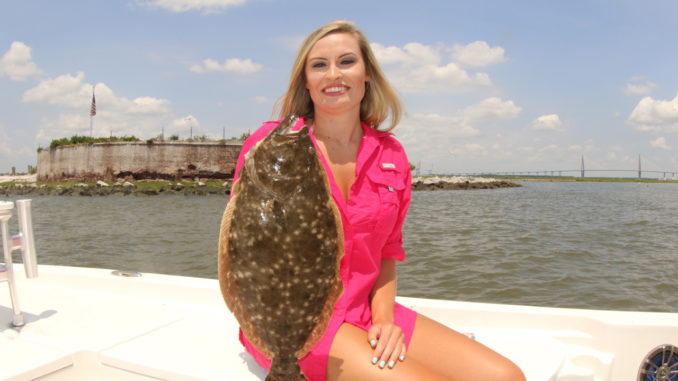
Castle Pinckney is Charleston Harbor’s flatfish hotspot
Castle Pinckney isn’t tough to spot in Charleston Harbor. The battle-worn structure is a landmark for many reasons, even among anglers. In August, it’s an easy place for anyone craving flounder to catch themselves a meal.
“It’s no secret that you can catch flounder here, even in the heat of summer,” said Addison Rupert of Lowcountry Outdoor Adventures (843-557-3476), who thinks as long as you’re fishing relatively close to the island’s banks, you’re in the flounder zone.
“It’s got everything flounder like. You can catch them in the rocky structure, and you can catch them up against the flooded grass. You can really circle around the whole island and catch them just about anywhere at Castle Pinckney,” Rupert said.
Live mud minnows or menhaden are tough to beat as live baits; Rupert said it’s all about working the bait in slowly — even more slowly than at other times of the year. It’s August, and flounder can be a little lazy in the heat, but they still have to eat, so just give them a nice-sized bait and work it slowly.
While staying close to the bank is a strategy that produces plenty of flounder, Rupert said anglers shouldn’t hesitate to put their baits in some of the deeper water, especially at low tide when flounder are searching for deeper holes to wait out that portion of the tide cycle.
“They won’t move far from those rock piles or weed lines at low tide,” he said. “They want to be able to get back to those weed lines and rock piles once the tide comes in, so they’ll look for deeper pockets of water just off the banks. Find the deeper holes on (a depth finder) and work them thoroughly, and slowly,” he said.
One thing many anglers forget when flounder fishing with live bait is that they can let the bait do most of the work. While a slow retrieve is essential, anglers can even pause. The flounder know where the baitfish want to go, so they are set up to ambush them. That’s not to say you should just make a cast and let it sit still. You want to slowly move your bait, but a pause in between movements will give your bait the chance to make the grave error that the flounder, and you, want it to make.





Be the first to comment